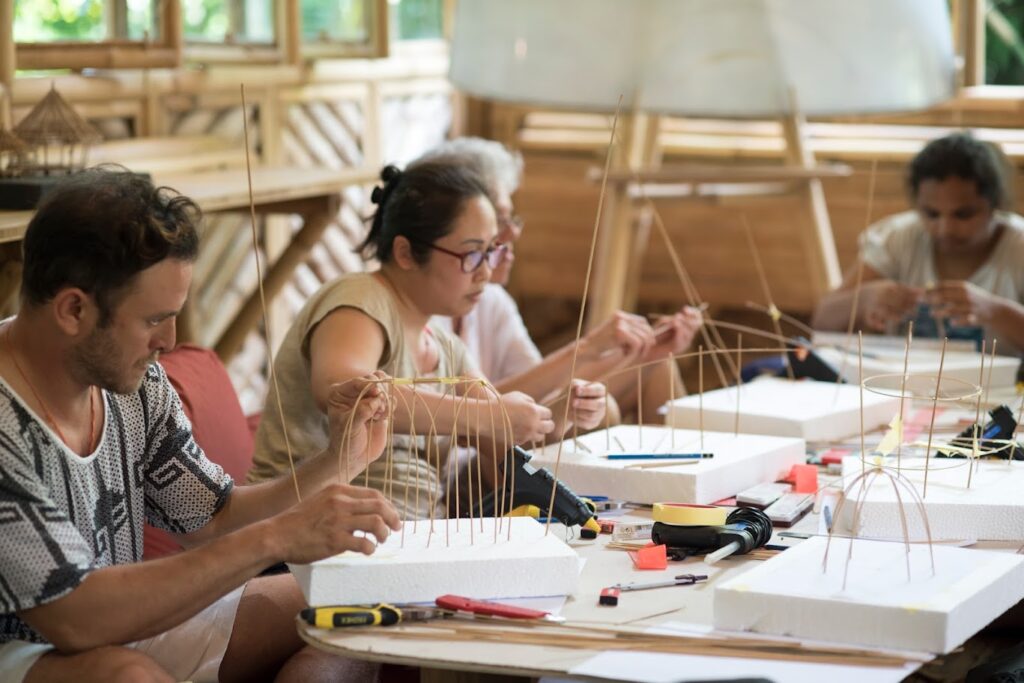Designing a Bamboo Pavilion During an Online Course
By Hannah Filius | January 29, 2024 | Student Work -
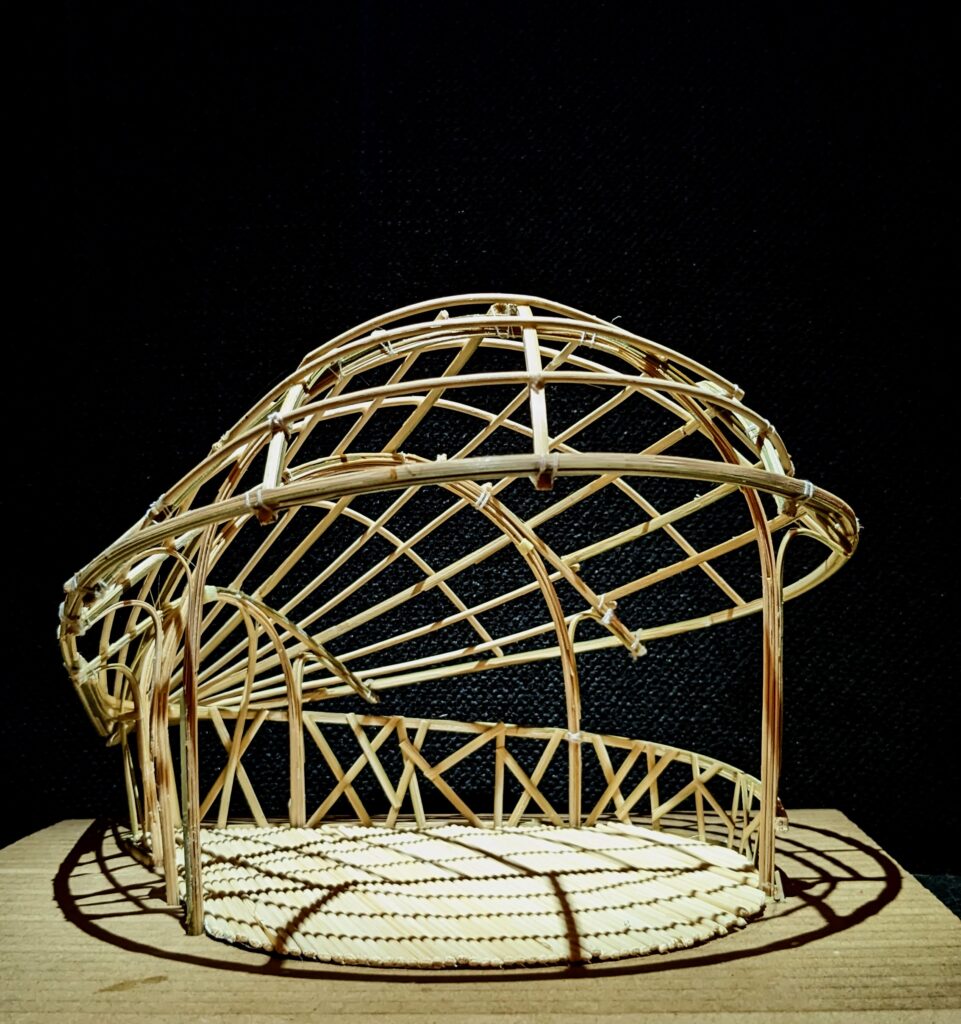
Hear from recent Bamboo U online graduate Hannah Filius about her experience designing a bamboo building during the online course.
During my recent travels, bamboo caught my eye. Around me, I saw more and more projects like festival stages and small pavilions made with bamboo. As a product designer from the Netherlands, I'm always looking for new ideas so I decided to explore the world of bamboo. Exploring bamboo, I discovered it's a beautiful, sustainable material. I was impressed by what Bamboo U is building in Bali, so I joined their course. I wanted to learn how to design with bamboo and make structures myself in the future. Besides lots of knowledge about growing bamboo and designing, Bamboo U also allows meeting other bamboo enthusiasts.
The Building Concept
During the online Bamboo U course I learned that, before coming up with a concept, it's important to establish some guidelines for the location, function, and available materials. I wanted to create a cozy gathering area for up to three people where you can read, meditate, or just find calmness. For my design, the key considerations were creating a space that feels sheltered, facing away from a busy road, and having a connection to the area, which in this case meant ocean, water sports, and fishing. Another important factor was that I only had thin bamboo available that had to be used in bundles. This influenced the design, shaping it into a curved structure with decorative splits, making for example traditional fish mouth joints impossible.
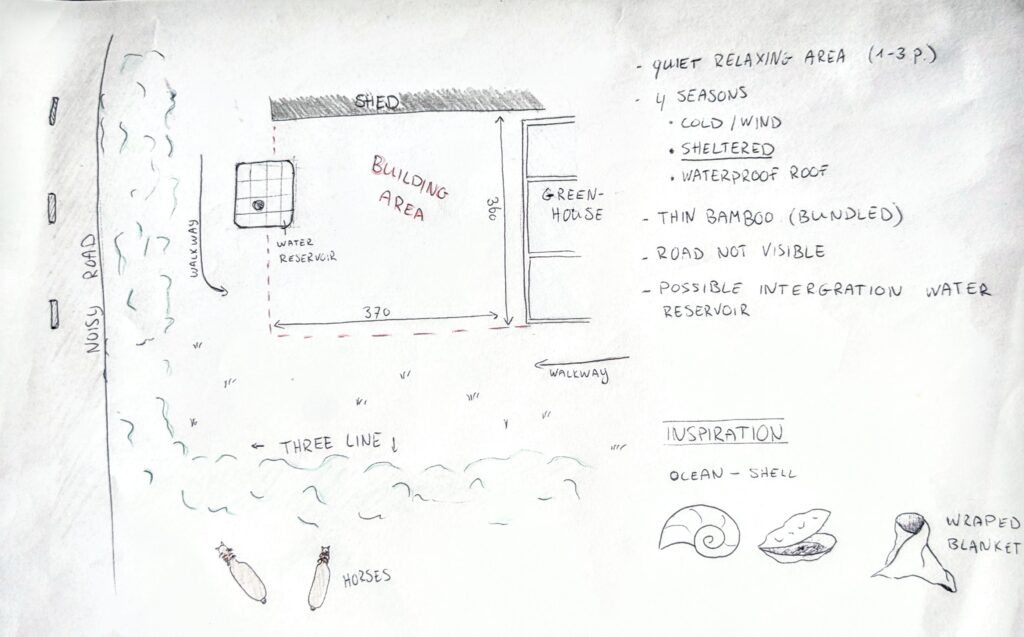
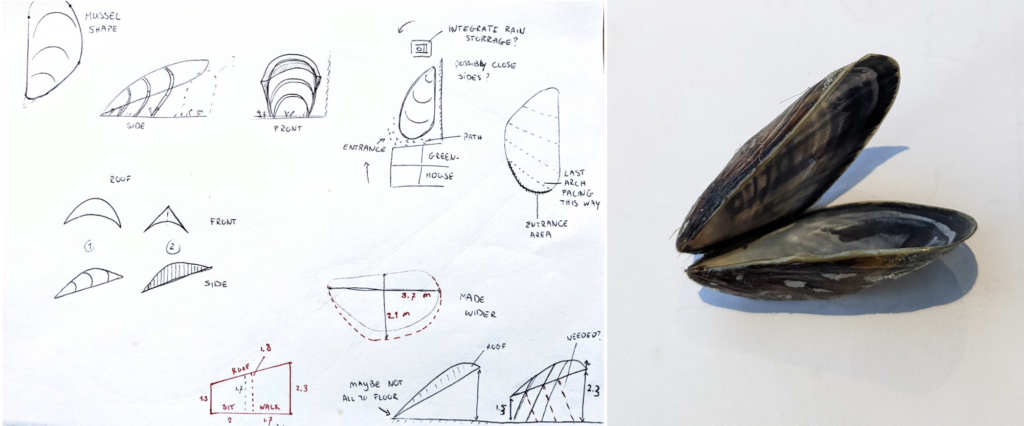
At the start of the process, it was quite hard to get my ideas on paper. Sketches were not fully illustrating what I wanted to make and I couldn’t add enough complexity to them. This is why I decided to go to the modeling phase pretty soon. Still designing while modeling.
Developing the Model
The picture below shows the first concept model. During the course, I understood the rules of for example overhang and spacing between roof supports. Because of this, I had to quickly decide on the material of the roof before creating a structural model, since some roofs are heavier than others.

During a second model, after finishing the module of engineering with bamboo, triangles and more supports in the back of the roof are added. The angle of the roof should be steep enough for the rain to go down. There is still some joinery that is not figured out yet. Where the ends of the poles meet each other it will be difficult to connect them since only bundles of bamboo will be used. The next model will need to have more curves to have joints that can be lashed together with rope.
I learned that pushing down on the scale model to check if it is steady will give you an understanding of how steady the structure will be on the real scale. In this phase, the model was pretty steady but can still move front and back so it needs to have more support in that direction.
This led to the final model. After using the first model to help design the shape and see where the weak points were, I was able to create the structural model. The shape is more like a mussel and full of curves. Some bamboo splits are added for detail and to create a closed, sheltered atmosphere within the pavilion.
In one of the course modules “8 Design Principles by IBUKU'' were mentioned. One of them is: “Design for your bamboo”. This is something I had to keep in mind while creating the final model. Sometimes I had to rethink details and consider the bamboo I have is short and thin so it cannot have the same structural value as I have seen in some of Bamboo U’s buildings. Another design principle mentioned is “consider the skills you have available”.

In Bali, there are amazingly skilled bamboo carpenters, but I do not have that kind of ability. This led me to make my design as beautiful as possible with minimal bamboo carpentry skills. I tried to simplify wherever I could without giving up on aesthetics. The next step is to see if I can build it!

Learning Experience
Before starting the Bamboo U online course, I wasn't sure if I could create a good model. Thanks to the course’s extensive, step-by-step modules, I was able to do it! I learned about different types of bamboo, how to use them, and how to grade and test bamboo poles before using them. It will take some time to develop an eye for the perfect bamboo pole, but now I feel confident enough to sustainably harvest bamboo in my area and treat it using simple "at-home methods." If I ever need to buy bamboo in Europe, I know what to look for.
The course covered all the steps of the design process, allowing me to create a design step by step and understand each detail. Bamboo U also shared their expertise and experience in going from design to construction, making me more confident that I'll be able to build the bamboo pavilion in the future.
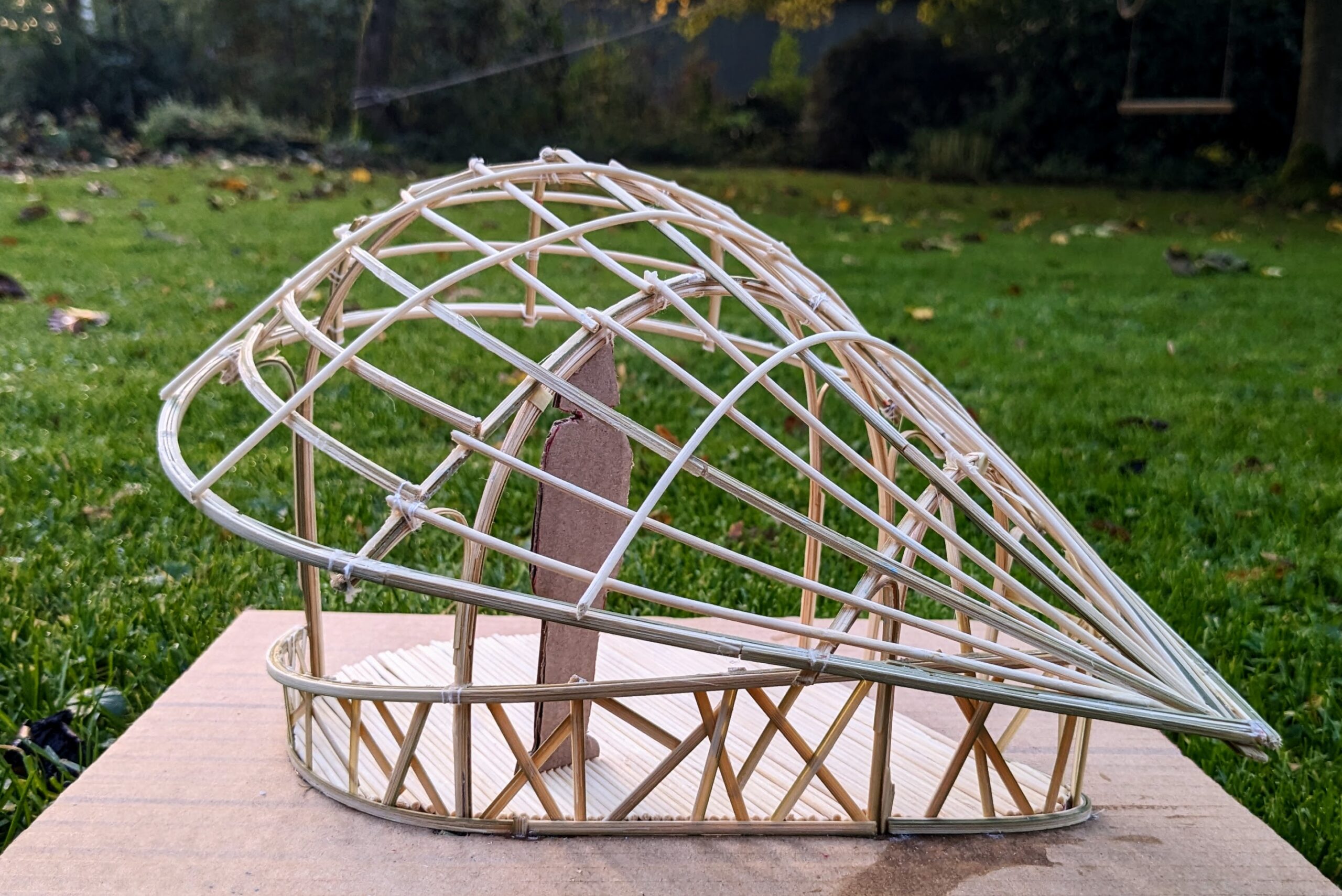
_________________
Learn more and join The Fundamentals of Building with Bamboo Online Course here: www.bamboou.com/fbbcourse

I'm a bamboo enthusiast with a background in Product Design, often drawing my inspiration from nature. Excited about eco-friendly design, I'm exploring bamboo modeling to bring new ideas and sustainable materials together.
JUNE 13-24, 2025
The 11 Day Bamboo Build & Design Course in Bali
In 11 days, we'll show you how to build bamboo structures we’ll share all that it takes to build with nature.
Start Anytime
The Bamboo Harvesting Course
The Bamboo Harvesting Course is an online step-by-step training to harvest and care for your bamboo clumps to ensure their longevity and productivity. This maximizes the potential of this beautiful grass as a rapidly renewable resource.Whether you are an architect, builder, or sustainability enthusiast, this mini course will enable you to utilize this rapidly regenerative resource as a durable construction material.It will help remove any fear or doubt about the durability of bamboo and help you build reputable bamboo structures that stand the test of time!









